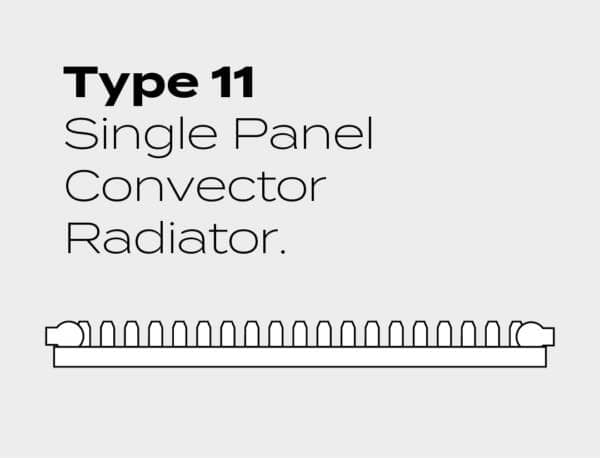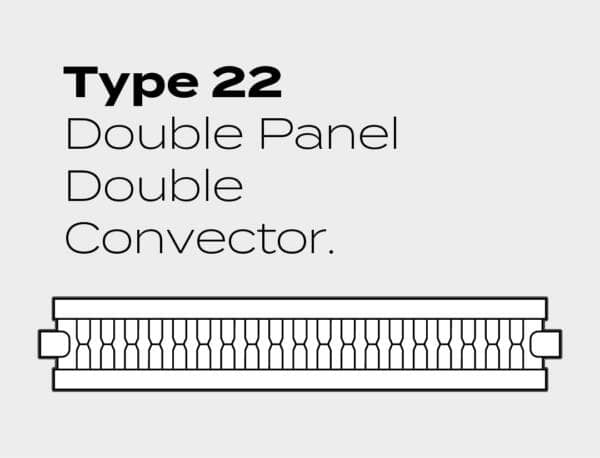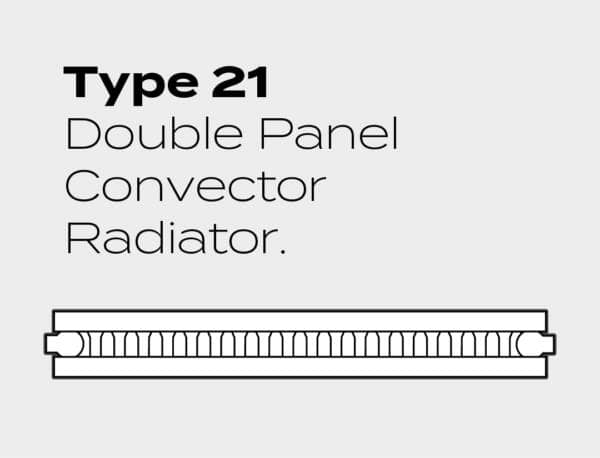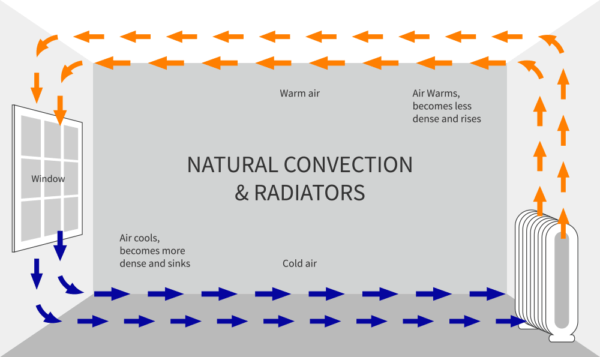Contents
ToggleSingle or double convector?
Here at BestHeating, it’s easy to get carried away with expressing a little love for designer radiators and towel rails, and I sometimes overlook the fact that there are simple and affordable standard convector radiators in our store too.
So, if you’re new to the radiator game – or simply don’t fancy heating your home with a hyper-stylized vertical designer radiator that will open tins and make you a brew* – please accept this blog as a heartfelt apology for all the times I’ve dismissed the humble convector radiator.

Now I’ve got the apology out of the way, I’m going to assume that you’re thinking about buying a new convector radiator, or have come to find out what they’re all about.
Hopefully – whatever your reason for being here – the next five minutes or so should help.
*Please note – Tin opening, brew making radiators don’t actually exist, yet!
What is a convector radiator?
Convector radiators (or convection heaters) are probably something that you’re actually quite familiar with because they’re basically just your standard, run-of-the-mill radiator.
They are among the most common appliances used for heating in UK homes and chances are you know someone that has one or perhaps have a version of one sitting on your wall right now.
They usually comprise of one or two panels of grooved steel and a number of what are known as ‘convector fins’ (zig-zagged metal strips) – that you’ll find down the back or in-between these panels – to help increase the surface area.
There’s nothing overly complicated about them and there are really only three main types of convector radiator to consider –
Single Panel Convector Radiators or Type 11 Convectors
Ideal for heating a small space rapidly, a single panel convector, or Type 11 radiator features a single panel (normally made from steel) and has one set of convector fins attached to the back. Available in a range of dimensions, this type of radiator is perfect for hallways and small bedrooms, bathrooms or ensuite installation.
Double Panel Double Convector Radiators or Type 22 Convectors
A Type 22 convector radiator consists of two layers of convector fins sandwiched neatly between two single steel panels. The addition of the two sets of fins increases the surface area of the radiator and helps to maximise the output and generate plenty of heat. This kind of radiator is best suited to large and medium-sized rooms that require a higher heat output.
Double Panel Plus Convector Radiators or Type 21 Convectors
One step up from the Type 11 and we find the Type 21 double panel convector radiator. This is basically a Type 11 with the addition of another panel on the back enclosing a single set of convector fins. Despite an increase in the overall size and depth of the radiator, a Type 21 is still a great way to add a little extra warmth to a small room or hallway.
Did you know? – The numbers for the different types are significant – Type 11 is one panel, one convector, Type 21, two panels, one convector and Type 22, two of each.
How does a convector radiator work?
You might have read our blog on how a radiator heats a room, and if you did, you’ll know that convection currents are responsible for circulating warm air around a room.
This is why the fins on a convector radiator are really important, as they help to increase the size of the radiator and offer more surface area for the air to come into contact with.
This enables more effective heating to take place than would occur without the convector fins.
So a double panel plus convector (Type 21) will heat your space quicker than a single panel version (Type 11) of the same size and a double panel, double convector (Type 22) – that features two panels and two sets of convection fins – should heat a space quicker than both of them.
Simple enough, I’m sure you’ll agree.
The main difference between single and double panel convectors then, is that the double panel will provide more heat than the single, and a double panel with a double convector (two sets of fins) will heat a space even quicker.
Is there any point to having a single panel convector?
So, you might be wondering why some people even bother with a single panel convector radiator when you can get a double panel version that kicks out more heat.
Well, despite this, there are a few reasons for choosing a single panel convector radiator to heat your room.
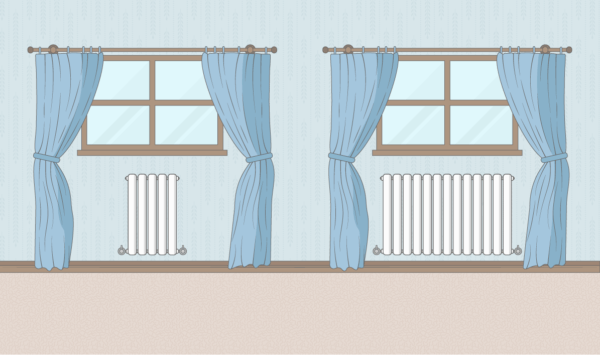
For example, if you have a room that’s short on space or maybe a little narrow – like a box bedroom or a hallway – a single panel convector can be great because they don’t give out too much heat or project so far from the wall that they make it difficult to move around.
Another reason to opt for a Type 11 convector is one of the aesthetics involved.
If you have a particularly wide window, for example, it may be a little better to have a single panel installed that is the same width as the window, rather than opting for a double convector that is only half the size (see the image above for a visual representation of this point).
You may benefit from the same heat output from both, but the look of the single panel installation will probably be far easier on the eye than the double.
In this instance, use your better judgement and choose that one that looks the best for you, or the one that allows you to make the most of the space.
Can I swap a single convector for a double convector?
Providing that the double panel radiator has more or less the same dimensions – height & width – as the single panel that you are replacing, you should be able to swap out the single for a double replacement without too much trouble.
That said, a larger radiator will have an effect on how your boiler works, so it’s important to consider the impact a new radiator will have on your central heating system, as a whole.
A new double panel convector – of the same height and width as your old single one – will definitely provide more heat than you previously had, but it also means that your boiler has to work that little bit harder to ensure that there’s enough power available for it to reach the optimum temperature.
So, before you go ripping out all of your old single panel radiators – like some crazed David Platt heating wannabe – it might be a good idea to have a chat with a heating engineer or plumber and just check that your boiler has the adequate kilowattage power available to accommodate a new double panel radiator.
How do I choose the best convector radiator?
As with all heating appliances, to ensure you purchase an appliance that will make your space warm and inviting, it’s important to calculate how much heat will be lost from your room.
This depends on a number of different factors, like the type of windows you have and where you intend on placing the radiator, to what is above and below the room and more.
To ensure you get this calculation right, use our BTU Calculator and get an accurate figure to help in your search for the perfect convector – just keep in mind the different types available and how they may each impact the available space in your room.
Stay Safe & Happy Heating.

John trained in journalism before finding his way to the BestHeating Advice Centre team. He uses his journalism skills to meticulously research heating topics and bring you the latest news and views on all things home heating related. He’ll also beat you at any sport that involves a cue!

